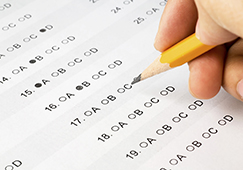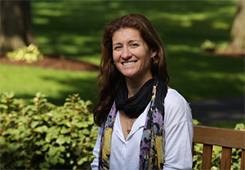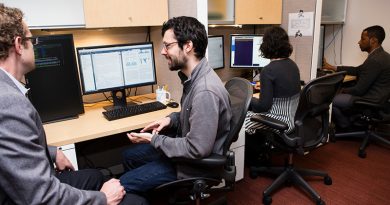
Inclusive Assessment: Equal or Equitable?
This article was originally published in Diversity and Inclusion in the College Classroom, a report from Faculty Focus and Magna Publications. The entire report is available at the Faculty Focus website.
By Donna M. Qualters, PhD
Inclusive assessment often challenges our notion of fairness by asking us to think in terms of equity rather than equality. Shouldn’t we be measuring students in the same manner if we are to be fair? That practice makes the assumption that all students are the same and therefore can be assessed the same way, an assumption we know has never been true. Reframing assessment to be more inclusive takes on greater importance when we hear student voices.
A recent survey of student perceptions conducted by Mark Chesler at the University of Michigan uncovered the following themes:
- Faculty have low expectations. Many students of color reported that faculty did not expect them to perform well in class.
- Faculty do not understand that we are different. Some students reported that they felt estranged and even excluded by assumptions made by faculty about students in general that did not apply to them.
- We are not all alike. In contrast, some students experience being stereotyped or lumped together when they are not alike.
How can we address these concerns in our assessment practices to feel confident that we have measured all students in an equitable manner, and at the same time have been sensitive to cultural, economic, and social differences?
Here are some general principles to create student-centered inclusive assessment:
- Be flexible by using a range of methods to respond to the diversity in the student body. Inclusive assessment provides opportunities for students to express their learning in different modes and modalities.
- Be clear about your learning objectives, and ensure that students understand them and understand how the assessment will measure their progress toward those objectives.
- Be creative and utilize a variety of assessment methods to measure student performance, and where possible use multiple measures.
- Be concerned with the collective as well as with the individual. Inclusive assessments should measure both independent and group assignments.
- Be holistic and remember that inclusive assessment occurs before, during, and after learning, the most important element being frequent targeted feedback.
Below are some suggested techniques and ideas that allow assessment to be a learning tool and give all students the opportunity to demonstrate their learning in ways that reflect differences.
Inclusive assessment utilizes multiple and varied methods of student evaluation.
- Final paper options
- Digital story—reflecting the goal of the course
- Short play or dialogue—on course topics
- Verbal exam—students record their answers
- Projects—students can construct a project that reflects the goal of the course
- Testing/quiz options
- Student-generated test questions
- Double-entry journals (entry 1, the ideas/entry 2, personal significance of the ideas)
- Audio protocol—students record talking through the process of solving a problem or answering a question
- Ongoing class assessment
- Background probe—short questionnaire at the beginning of a unit/topic to determine the appropriate level of instruction and student experience with the topic
- Minute paper—anonymous end–of-the-class question on unclear points
- Concept maps—diagrams the mental connections students are making about the course material
Inclusive assessment holds high expectations for all students.
- Distribute anonymous copies of students’ written work from previous classes that range in quality, and ask students to rank the work and identify their reason for the ranking.
- Provide students with a checklist of criteria (rubric) that will be used to evaluate the quality of their work in whatever modality they choose to demonstrate learning.
Inclusive assessment requires frequent feedback.
- After feedback, students should be given the opportunity to practice that feedback in a follow-up assignment or activity.
- Feedback on progress should be given early in the term with multiple sources of data before midterm to help students determine their strengths and areas needing attention.
- Classroom assessment techniques are invaluable tools for frequent feedback.
Inclusive assessment often uses a blend of quantitative and qualitative.
- In mathematical/science-based courses—ask students to describe how they would solve a problem rather than just write the solution.
- In language arts–based classes—include short, objective test questions to understand student comprehension of the basic information that will influence their writing.
In summary, MacKinnon and Manathunga remind us that “culturally responsive assessment demonstrates that flexibility, choice and relevance…enable all students to choose subjects on the basis of desire to engage intellectually in the teaching and learning process.”
Adapted from:
Angelo, T and Cross KP (1993), Classroom Assessment Techniques, Jossey-Bass: San Franciso.
Chesler, Mark, Center for the Research on Learning and Teaching, University of Michigan. Occasional Paper #7.
Cuseo, Joe (2012), Effective Culturally Inclusive Assessment of Student Learning and Academic Performance in Infusing Diversity and Cultural Competence into Teacher Education. Quincy, MA: Kendall Hunt Publishing.
MacKinnon and C. Manathunga (2003). Going Global with Assessment: What to do when the dominant culture’s literacy drives assessment. Journal of Higher Education and Research. Downloaded at Tufts, September 2015.
UC San Diego: http://vcsa.ucsd.edu/_files/assessment/ resources/50_cats.pdf
Trinity College Dublin: https://www.tcd.ie/CAPSL/TIC/ guidelines/assessments/
Photo Credit: Exam by Alberto G. on Flickr




